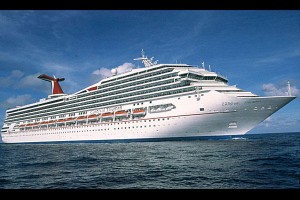
Cruise ship voyages, who has never been on a cruise ship voyage? Among the friends around me, majority of them have been on a cruise. Usually vacations are expensive and highly sought after, but going on vacation on a cruise seems to be the norm now. Why is that? It is because the prices of these cruise vacation packages always seem to be on “promotion” which makes them so affordable for an average income family to go on vacation. Cruises are rather luxurious, what makes them so affordable? It is because the supply and demand shifts rather drastically from the date of the cruise being schedules to right before departure.
Similar to the varying and fluctuating prices of plane tickets, cruise tickets work approximately the same way-except that it becomes less and less expensive as it gets closer and closer to departure date. Why are companies in such a rush to fill up these vacancies? Because “even if discounting leads to a less-profitable customer, it’s still a customer as opposed to an empty room” and a whether or not a cruise is full or not, it still costs the same for the company to run that voyage.
Now the question that I propose is why does supply and demand for cruises not go back to the market equilibrium? Companies always hope for “a cruise season without a disaster,” but how come this happens season after season? I think that it might be because the companies forecasts are constantly too high. In my opinion, this error results from the mistakes of accounting(management accounting), marketing(market research for future supply and demand) and operations(inaccurate forecasts). With the increase in efficiency and affordability of alternative travel methods and vacation opportunities, perhaps the demand for the cruise industry is on a decline, but I am waiting for the one season when cruise companies do not encounter a “disaster”.



 If I was to make a SWOT analysis for the new promotion of the 747-800s, it would be as follows:
If I was to make a SWOT analysis for the new promotion of the 747-800s, it would be as follows: